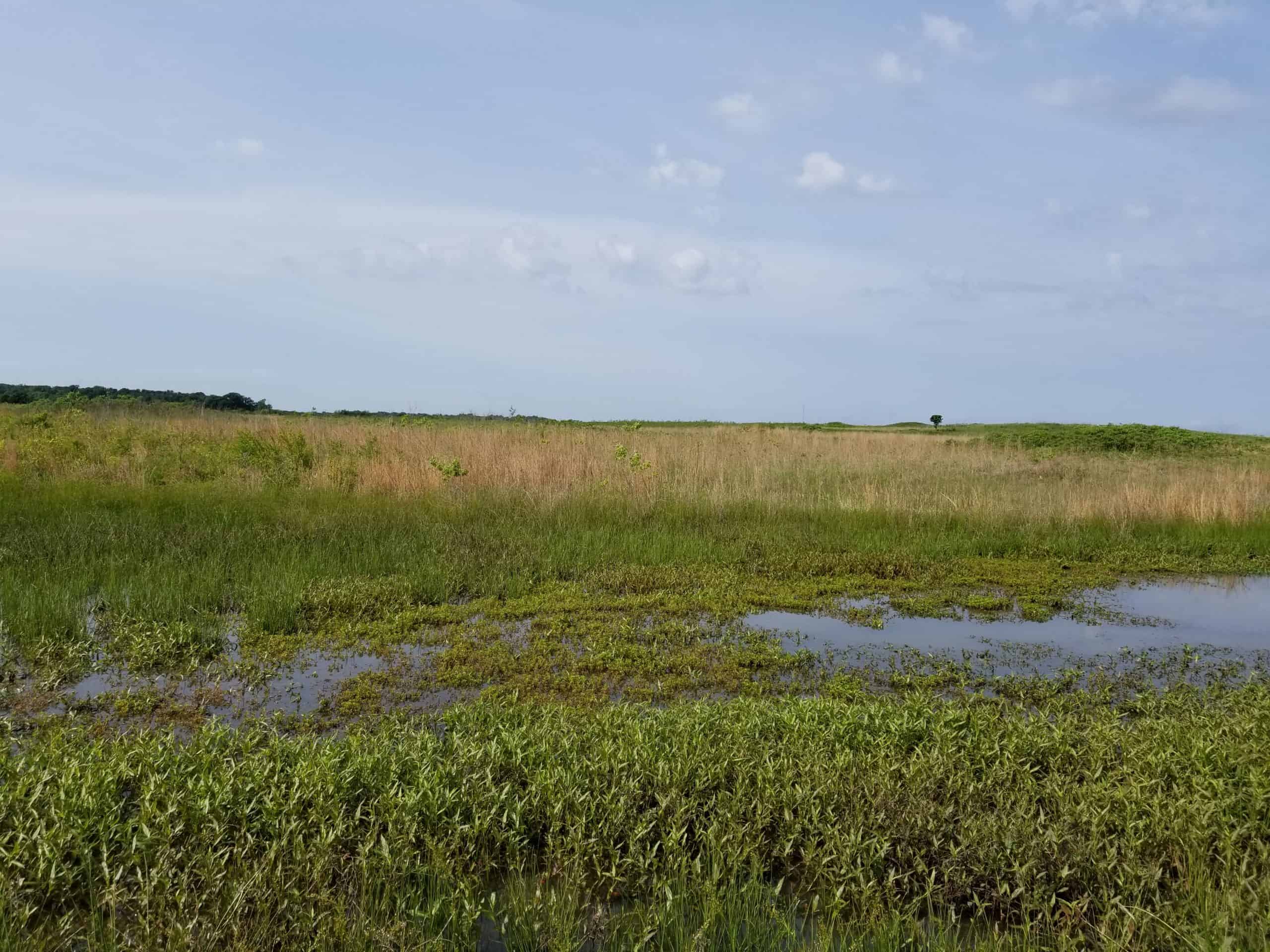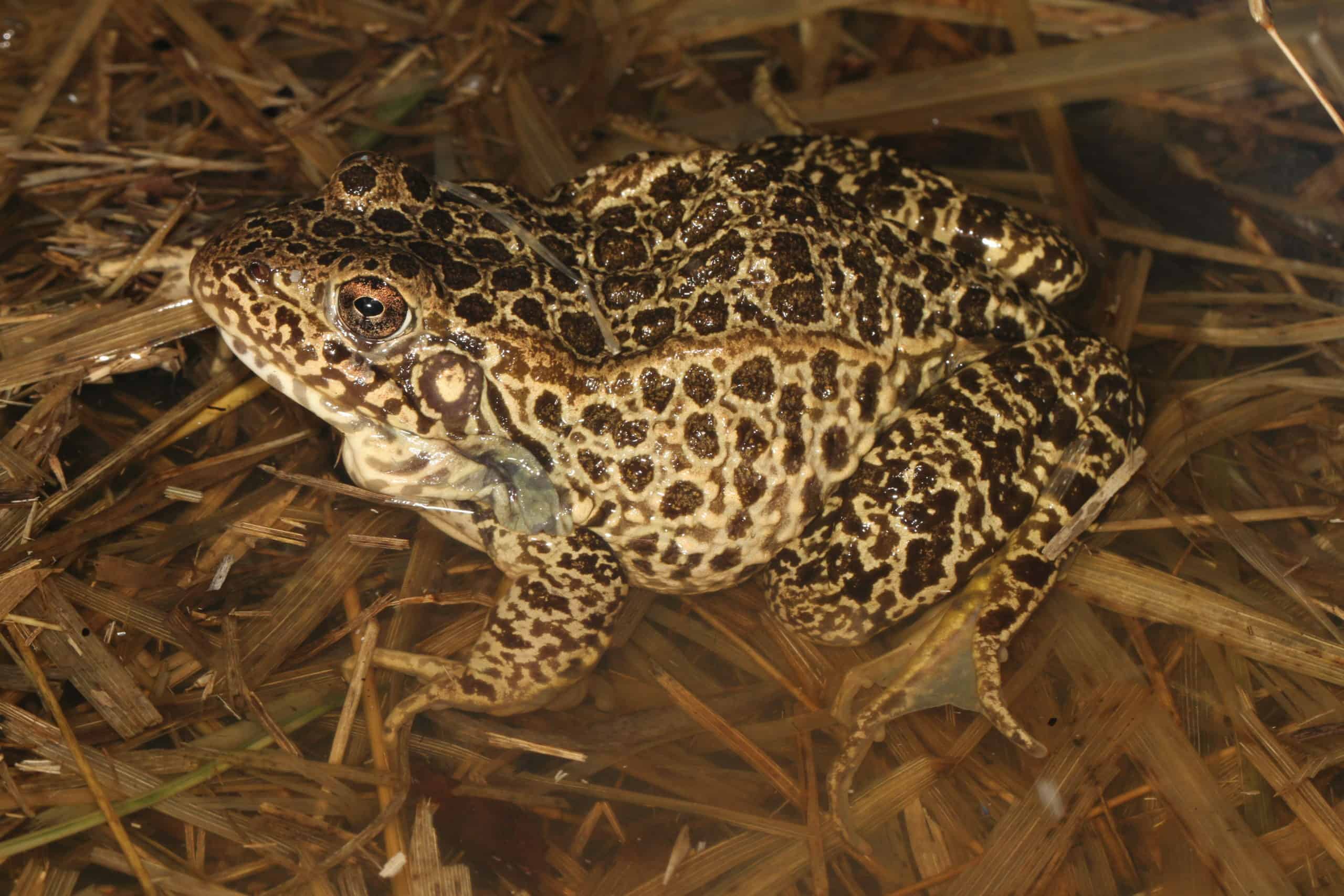Share this article
Crawfish frogs are declining in Arkansas
Large amounts of crawfish frogs seemed to be dying, and researchers weren’t sure why.
Chelsea Kross, a quantitative ecologist at the Illinois Natural History Museum, and her colleagues had conducted a short study placing telemetry tracking devices on 26 of the amphibians at the Woolsey Wet Prairie Sanctuary near Fayetteville, Arkansas in 2015. The sanctuary, owned by the city, was created after a water treatment plant disturbed some crawfish frog habitats.
But about half of the frogs they were tracking died—a number that seemed unsustainable. The researchers wanted to broaden their study to learn more about the populations in Arkansas and why they might be declining. They published a couple of recent studies on the subject.

Crawfish frogs typically breed in temporary wetlands that disappear in the late summer. Credit: Chelsea Kross
For one study, published earlier this year in Ichthyology & Herpetology, Kross and her co-author John Willson, an associate professor at the University of Arkansas, compared crawfish frog numbers in northwest Arkansas with previously recorded information on historic populations.
Crawfish frogs (Lithobates areolatus) are so-called because they often use crawfish burrows outside of breeding season, though they occasionally eat the crustaceans as well. The amphibians are listed as endangered in Indiana and Iowa—they are thought to be extirpated in the latter, Kross said. In Arkansas, less is known, but numbers are thought to be dropping.
The researchers identified more than 80 sites where they thought crawfish frogs might be breeding in the area or that historically had recorded populations of the frogs. They surveyed mostly around roads, since this part of Arkansas is mostly private land and difficult to access.
The team conducted 405 sound surveys across these wetlands, listening for frog calls for a two-year period from March 2016 to May 2017. “[The call] sounds like a short snore,” Kross said. And if there are lots of adults around, they usually call in chorus.
Their results showed that crawfish frogs were now absent from six of the 16 historic population sites they surveyed, or nearly 40%. Many of these sites that no longer hosted crawfish frogs were in urbanized areas that had seen development and human population growth in recent years near towns like Fayetteville or Bentonville.
“We found that crawfish frogs in urbanized areas appear to have been lost,” Kross said.
But the team did identify a number of populations that hadn’t previously been recorded, many of which occurred in hay pastures or cattle fields.
There was also a lot of variation over the two years of study. They recorded some calls in an area one year and didn’t another year. In some fields, for example, the researchers detected more than 50 individuals calling in an area, but no frogs the following year and up to five years after the initial visit.
Field dynamics
To find out what factors may be important in determining frog population dynamics, the two researchers used controlled tanks with crawfish frog eggs in different types of grass. They combined this with population models, as discussed in a follow up study published more recently in Animal Conservation.
In that study, they found that the type of vegetation seems to affect the stability of populations. Frog populations in hay wetlands, made up mostly of tall fescue grass (Lolium arundinacea), fluctuated a lot. To some degree, this is normal, since the ponds where crawfish frogs lay eggs are typically temporary, appearing in spring and drying up by late summer.
But populations in these hay field had much more boom and bust dynamics than more natural mixed prairie fields, which are also temporary.

Crawfish frogs had more stable populations in Arkansas in prairie wetlands than in wetlands in hay pastures. Credit: J.D. Willson
Kross said this might be due to over competition during breeding season. Hay provides a lot of nutrients to wetlands, which can lead to high population sizes. This can result in the population overshooting the habitat’s carrying capacity, thereby resulting in a higher extinction risk. When large numbers of females lay eggs in the same year, most individual tadpoles may go hungry due to the large crowds of their hungry peers.
Females can lay up to 5,000 eggs in a year, and there may not be enough resources to go around if a number of females lay eggs in the same wetland, Kross speculated. While it may seem contradictory that a large number of eggs results in less tadpoles metamorphizing to adults, Kross said these wetlands may not be able to support such high densities, and most tadpoles may starve to death.
“It’s not that [hay wetlands] are too good for them. It’s that it causes very big swings in potential population sizes,” Kross said.
Prairie wetlands, on the other hand, are smaller and more spread out. “The prairies get these little depressions, and there are a lot of wet pockets on the landscape, so [pregnant female frogs] can spread out pretty well,” Kross said. While populations never get as large some years in these areas, Kross said that prairie wetlands may result in a more stable population with less likelihood of local extirpation.
Crawfish frogs are declining across their range, Kross said. So learning more about the kinds of things that can affect frog populations like urbanization and field type is key to improving management in the future.
“If we want to keep crawfish frogs in an area, then we need to restore some of these open canopy habitats,” she said.







